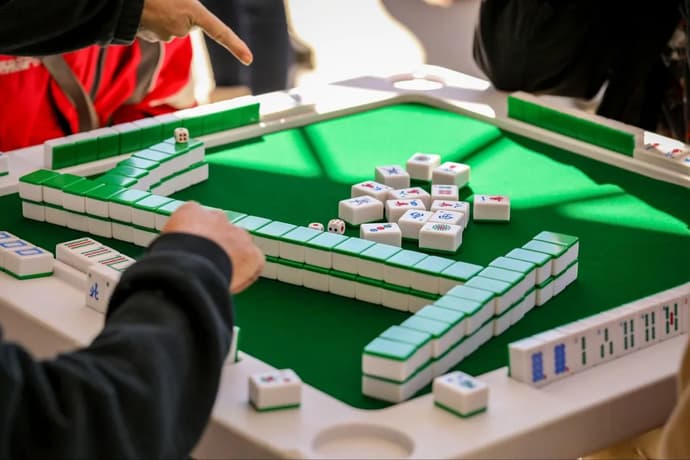
What’s the Ultimate Skill Game Between Mahjong vs. Hearthstone vs. Poker?

Mahjong often gets overlooked next to poker and Hearthstone, yet it combines serious tactical demands with one of the largest global player bases at over 600 million. Hearthstone, by comparison, has over 100 million lifetime downloads but now averages under 4 million active users monthly.
Mahjong challenges players to manage 136 tiles, track discards across the table, and calculate unseen combinations. Poker relies more on fixed card odds and betting patterns. With a global market estimated at up to $4 billion, Mahjong rewards sustained focus, memory accuracy, and subtle bluffing. It is more strategic than many players expect at first glance.
The Move from Tabletop to Digital Isn’t Just About Convenience
All three games have transformed. Hearthstone was digital from the start, but poker and Mahjong have seen sharp moves from physical tables to online platforms. This change has made games more accessible, faster-paced, and globally competitive. Digital Mahjong platforms now include ranked ladders, real-time analysis tools, and automated scoring, which streamlines gameplay while preserving strategic integrity.
These virtual spaces also offer added flexibility, particularly for skilled players who value efficient play sessions and convenient banking systems. Platforms like mahjong365.com cater to that demand, offering tools for serious players who prioritize fast withdrawals, consistent interface quality, and high-level competitive play without sacrificing the tactical depth that defines Mahjong.
How Mahjong, Poker and Hearthstone Became Digital Staples
Over the past two decades, Mahjong, poker, and Hearthstone have each moved into globally accessible digital formats, but the way that happened reflects where each game began. Mahjong, once played in city parlors and private homes, now supports a multibillion-dollar online market, especially across Asia-Pacific. Digital platforms replicate their full rule set and layer in real-time scoring, ranked modes, and automatic tile sorting. This helps experienced players compete more efficiently without losing the tactical demands of the game. Poker went from casino rooms and home tables to international platforms with millions of players.
After televised events helped push it into the mainstream, online platforms now host tournaments, quick-play formats, and real-money tables with fast payouts and steady volume. Hearthstone launched directly into this environment, designed from the start as a screen-based card battler.
Its player base topped 100 million and still sees high daily activity. What all three now offer is consistency, access, and speed. Whether through mobile apps or browser platforms, they allow for shorter sessions, more precise analytics, and a wider pool of competition. That makes them not only easier to join but also more rewarding for players focused on strategy and performance.
Long-Term Planning and Tile Sequencing
In Mahjong, how you order and time your tiles can decide the entire round. Building a viable hand means thinking five, ten, or even fifteen moves ahead. Every claimed tile can broadcast intent or mislead an opponent. Hearthstone may ask players to build around synergy, and poker punishes poor pre-flop calls, but Mahjong links each decision with irreversible consequences of the round.
Memory and Calculation Under Pressure
Skill-based games come in many forms, but few compare in complexity and longevity to Mahjong. While digital card battlers like Hearthstone or traditional mainstays like poker often dominate competitive discussions, Mahjong’s mix of tile logic, memory work, and subtle bluffing earns it a place in the upper tier of strategy games.
While Hearthstone decks cap out at 30 cards and poker uses 52 with known distributions, Mahjong presents a broader memory challenge: 136 tiles, four players, and countless meld configurations. Players must recall who discarded what, infer risk from what’s missing, and decide whether an opponent’s silence hides a tenpai hand. It’s a real-time mental calculus that punishes the unfocused.
Bluffing, Reading the Table, and Subtle Deception
Poker players bluff with body language and bets. Hearthstone players manipulate tempo or bait out the removal. In Mahjong, bluffing is tied to tile exposure and discard patterns. A player may discard a potentially valuable tile early to feign weakness, or intentionally break a meld to bait a draw. The psychological dance happens silently, tile by tile, without a single chip or voice raised.
Dynamic Adaptation vs Static Engines
Games like Hearthstone rely heavily on static engines through their deck builds, predictable mana curves, and card synergies. Poker’s hand possibilities are fixed, with variance mainly in player psychology. Mahjong complicates things further: wind changes, dora tiles, self-draw bonuses, and rotating dealer roles create a dynamic, layered strategy where nothing stays constant. The meta is embedded in the match, not the ruleset.
Rewarding Mastery and Edge-Play
Hearthstone may reward meta familiarity and poker might reward bankroll strategy, but Mahjong demands internalized pattern recognition. Players develop intuition not from guides but from experience, learning when to fold a promising hand to play defense or when a risky discard might be worth the lead. That level of decision-making is harder to script and harder still to master.
Conclusion
Each game has its type of strategic depth. Poker emphasizes social prediction, Hearthstone rewards tactical sequencing, but Mahjong synthesizes both into a relentless logic engine. It’s less about luck than learning, and more about inference than impulse. It’s undeniable that Mahjong holds its own as a deeply layered game that tests planning and perception.

Kateryna Prykhodko es una autora creativa y colaboradora de confianza en EGamersWorld, conocida por sus atractivos contenidos y su atención al detalle. Combina la narración de historias con una comunicación clara y reflexiva, desempeñando un papel importante tanto en el trabajo editorial de la plataforma como en las interacciones entre bastidores.
 Cómo y cuándo usar la nueva pistola de bandido en ValorantUn resumen detallado de la nueva arma secundaria Bandit en Valorant, sus pros y sus contras, las reacciones de la comunidad, cuándo usarla y mucho más.
Cómo y cuándo usar la nueva pistola de bandido en ValorantUn resumen detallado de la nueva arma secundaria Bandit en Valorant, sus pros y sus contras, las reacciones de la comunidad, cuándo usarla y mucho más. VALORANT Temporada V26A1 Pase de Batalla: Resumen detallado de recompensas¡Echa un vistazo al Pase de Batalla del Acto 1 de la Temporada 2026 de VALORANT! Descubre nuevos aspectos, recompensas gratuitas, puntos de radianita y cartas de jugador, además de su relación con las actualizaciones del parche 12.00.
VALORANT Temporada V26A1 Pase de Batalla: Resumen detallado de recompensas¡Echa un vistazo al Pase de Batalla del Acto 1 de la Temporada 2026 de VALORANT! Descubre nuevos aspectos, recompensas gratuitas, puntos de radianita y cartas de jugador, además de su relación con las actualizaciones del parche 12.00. Calendario de eventos de BLAST CS2 en 2026Guía completa de los torneos BLAST de 2026: Bounty, Open y Rivals. Descubre el calendario completo de CS2, los principales eventos y dónde seguir los horarios de los partidos.
Calendario de eventos de BLAST CS2 en 2026Guía completa de los torneos BLAST de 2026: Bounty, Open y Rivals. Descubre el calendario completo de CS2, los principales eventos y dónde seguir los horarios de los partidos. Planos de StarRupture: Localización, acceso y producciónPlanos de StarRupture trazados a partir del juego en vivo, que cubren todas las ubicaciones conocidas y cómo funcionan realmente los desbloqueos de producción.
Planos de StarRupture: Localización, acceso y producciónPlanos de StarRupture trazados a partir del juego en vivo, que cubren todas las ubicaciones conocidas y cómo funcionan realmente los desbloqueos de producción.

